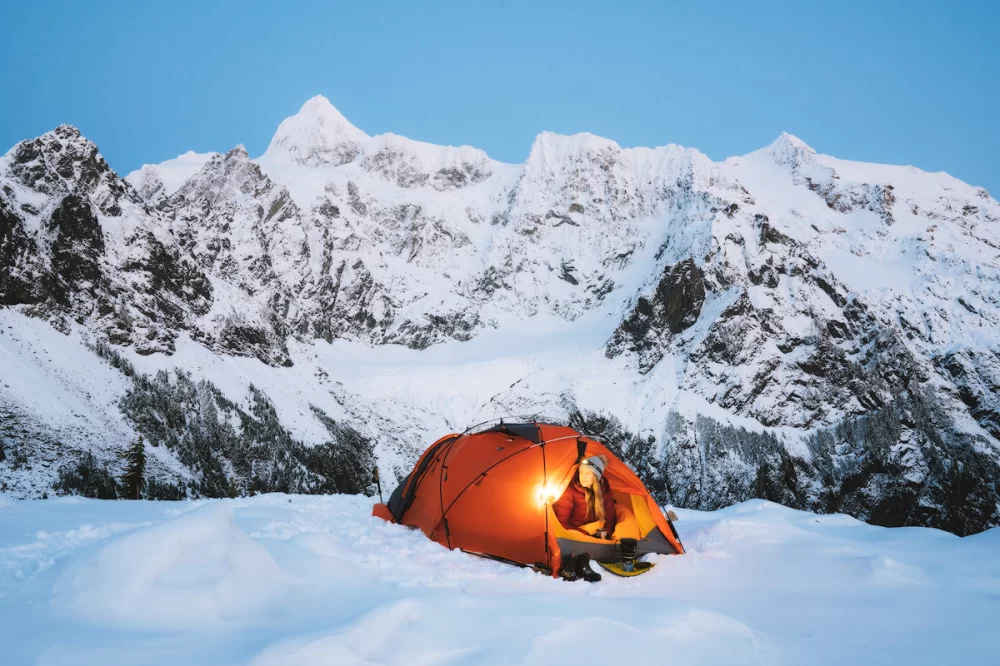The Best Winter Camping Locations in the US
- Why Winter Camping?
- Top Winter Camping Destinations in the US
- Essential Winter Camping Tips
- Real Winter Camping Experiences
- How to Plan Your Winter Camping Trip
1. Why Winter Camping?
Winter camping is a thrilling yet serene way to experience nature. For those who enjoy a bit of solitude and adventure, winter offers an entirely different perspective on the great outdoors. The crisp air, quiet snow-covered landscapes, and absence of summer crowds make winter camping uniquely peaceful.
Additionally, winter camping is a great way to experience challenging conditions and push your personal limits. Whether you're an experienced camper or a first-timer, camping in winter brings its own set of rewards—and challenges. Let’s dive into the best winter camping locations in the US where you can truly embrace the season.
2. Top Winter Camping Destinations in the US
The United States offers a variety of stunning winter camping locations, ranging from snowy mountains to remote forests. Here are some of the best spots for an unforgettable winter camping experience:
- Yellowstone National Park, Wyoming: Known for its geothermal features and abundant wildlife, Yellowstone transforms into a snowy wonderland in winter. With fewer tourists and a blanket of snow covering its geysers and hot springs, this location is perfect for adventurers seeking both beauty and isolation.
- Great Smoky Mountains, Tennessee/North Carolina: The Smoky Mountains offer breathtaking winter vistas, with a variety of camping options in lower altitudes that are accessible even in winter. It's ideal for those who prefer milder cold weather while still enjoying a scenic winter landscape.
- Acadia National Park, Maine: For those looking for a true winter experience, Acadia's rugged coastline and mountainous terrain offer a majestic backdrop for winter camping. Snowshoeing, winter hiking, and photography are popular activities here during the colder months.
- Joshua Tree National Park, California: Though not typically covered in snow, Joshua Tree offers a unique winter camping experience due to its mild winter temperatures. If you prefer to avoid frigid cold but still want a winter camping adventure, this is the perfect spot.
- Mount Hood National Forest, Oregon: Nestled near Portland, Mount Hood provides an excellent setting for winter camping. It features towering trees and snow-capped peaks, and the surrounding area offers skiing and snowboarding in addition to traditional camping activities.
3. Essential Winter Camping Tips
Winter camping can be a rewarding experience if you're prepared. To make your trip safe and enjoyable, here are some essential tips:
- Dress in Layers: Layering your clothing is crucial for maintaining warmth in cold temperatures. Start with moisture-wicking base layers, followed by insulation layers, and finish with a waterproof and windproof outer layer.
- Choose the Right Gear: Invest in quality winter camping gear, including a 4-season tent, sleeping bag rated for sub-zero temperatures, and insulated pads. Don’t forget a reliable headlamp and extra batteries for the long winter nights.
- Plan Your Food: Cold weather can make cooking more challenging, so plan meals that are easy to prepare and don’t require too much energy. Pre-cooked meals and high-energy snacks are great options for winter camping.
- Stay Dry: Wet clothing can lead to hypothermia, so it’s vital to stay dry at all times. Always have extra clothing and gear to change into in case you get wet.
4. Real Winter Camping Experiences
To help you get a better sense of what winter camping is really like, here are a couple of personal experiences from adventurers who have camped in the US during winter:
“I’ll never forget my winter camping trip to Yellowstone. The snow-covered geysers and the quiet of the park in winter made it feel like I was in another world. The cold was intense, but the experience was worth it—there’s something so magical about being one of the few people in a place as vast and beautiful as Yellowstone in the winter.” - Mark H., Winter Camper
Another camper, Emily J., recalls her experience in Acadia National Park: “The winter fog rolling over the water was breathtaking, and the peacefulness of the park in winter was something I’ll always cherish. Even though it was cold, the beauty of the landscape and the quiet solitude made it a trip I’ll never forget.”
5. How to Plan Your Winter Camping Trip
Planning your winter camping trip requires careful preparation, especially if you're new to the winter camping experience. Here are some steps to help ensure your success:
- Choose Your Destination: Select a location that matches your winter camping experience level. For beginners, parks with milder weather and accessible trails are ideal. For more experienced campers, areas with more challenging conditions like snow and ice might be more suitable.
- Check the Weather Forecast: Winter weather can be unpredictable, so make sure to monitor the forecast closely before and during your trip.
- Make Reservations Early: Winter camping spots can fill up quickly, especially in popular national parks. Make reservations ahead of time to ensure you have a spot at your chosen campsite.
- Pack Carefully: Plan for all conditions, including cold nights and possibly snowy trails. Don’t forget your essentials: sleeping bags, tent, insulated clothing, and enough food and water.
By planning carefully and following these tips, you’ll be ready for an amazing winter camping experience in some of the best locations the US has to offer.







